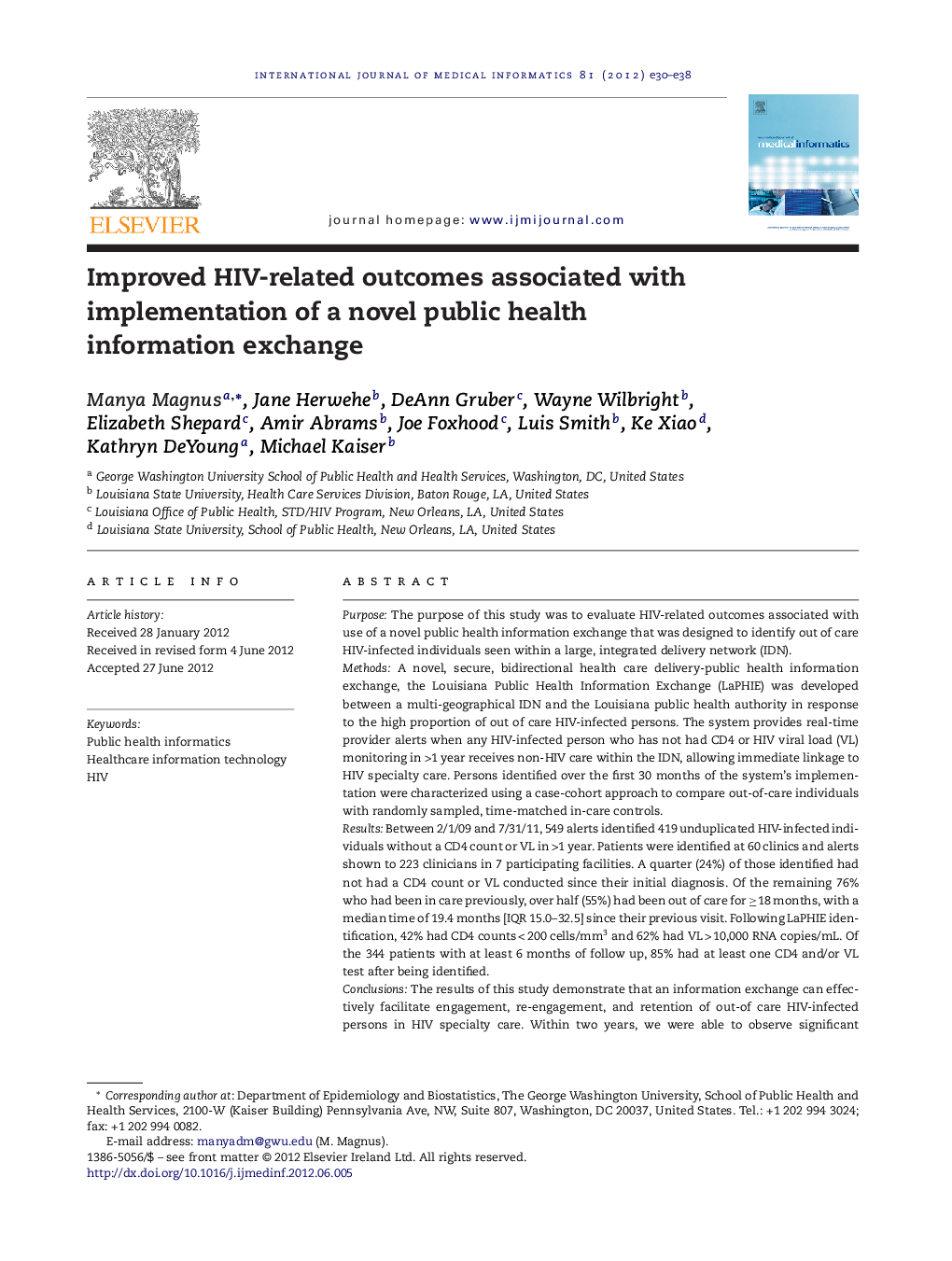| Article ID | Journal | Published Year | Pages | File Type |
|---|---|---|---|---|
| 516620 | International Journal of Medical Informatics | 2012 | 9 Pages |
PurposeThe purpose of this study was to evaluate HIV-related outcomes associated with use of a novel public health information exchange that was designed to identify out of care HIV-infected individuals seen within a large, integrated delivery network (IDN).MethodsA novel, secure, bidirectional health care delivery-public health information exchange, the Louisiana Public Health Information Exchange (LaPHIE) was developed between a multi-geographical IDN and the Louisiana public health authority in response to the high proportion of out of care HIV-infected persons. The system provides real-time provider alerts when any HIV-infected person who has not had CD4 or HIV viral load (VL) monitoring in >1 year receives non-HIV care within the IDN, allowing immediate linkage to HIV specialty care. Persons identified over the first 30 months of the system's implementation were characterized using a case-cohort approach to compare out-of-care individuals with randomly sampled, time-matched in-care controls.ResultsBetween 2/1/09 and 7/31/11, 549 alerts identified 419 unduplicated HIV-infected individuals without a CD4 count or VL in >1 year. Patients were identified at 60 clinics and alerts shown to 223 clinicians in 7 participating facilities. A quarter (24%) of those identified had not had a CD4 count or VL conducted since their initial diagnosis. Of the remaining 76% who had been in care previously, over half (55%) had been out of care for ≥18 months, with a median time of 19.4 months [IQR 15.0–32.5] since their previous visit. Following LaPHIE identification, 42% had CD4 counts < 200 cells/mm3 and 62% had VL > 10,000 RNA copies/mL. Of the 344 patients with at least 6 months of follow up, 85% had at least one CD4 and/or VL test after being identified.ConclusionsThe results of this study demonstrate that an information exchange can effectively facilitate engagement, re-engagement, and retention of out-of care HIV-infected persons in HIV specialty care. Within two years, we were able to observe significant improvements in HIV-related utilization and disease progression indices. Future programs should consider adopting this innovative strategy to improve HIV care at both the individual and population levels.
► A novel, secure, bidirectional exchange of information within a public health information exchange can effectively facilitate engagement, re-engagement, and retention of out-of-care HIV-infected persons in specialty care. ► Out-of-care HIV-infected individuals stayed in care and experienced improvements in HIV-related outcomes, including disease progression and healthcare utilization. ► Future programs should adopt this innovative public health information exchange strategy to improve HIV care at both the individual and population levels.
